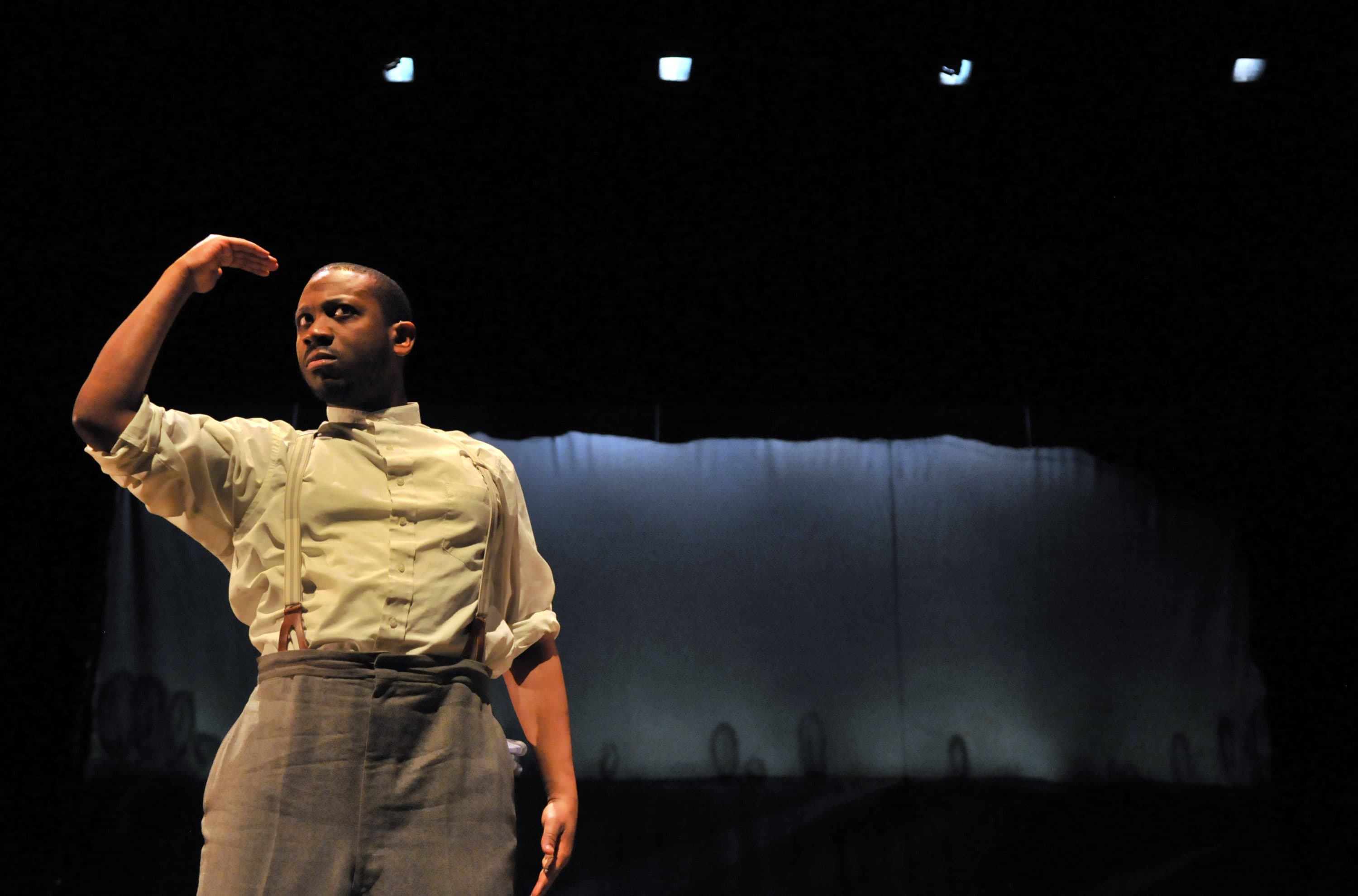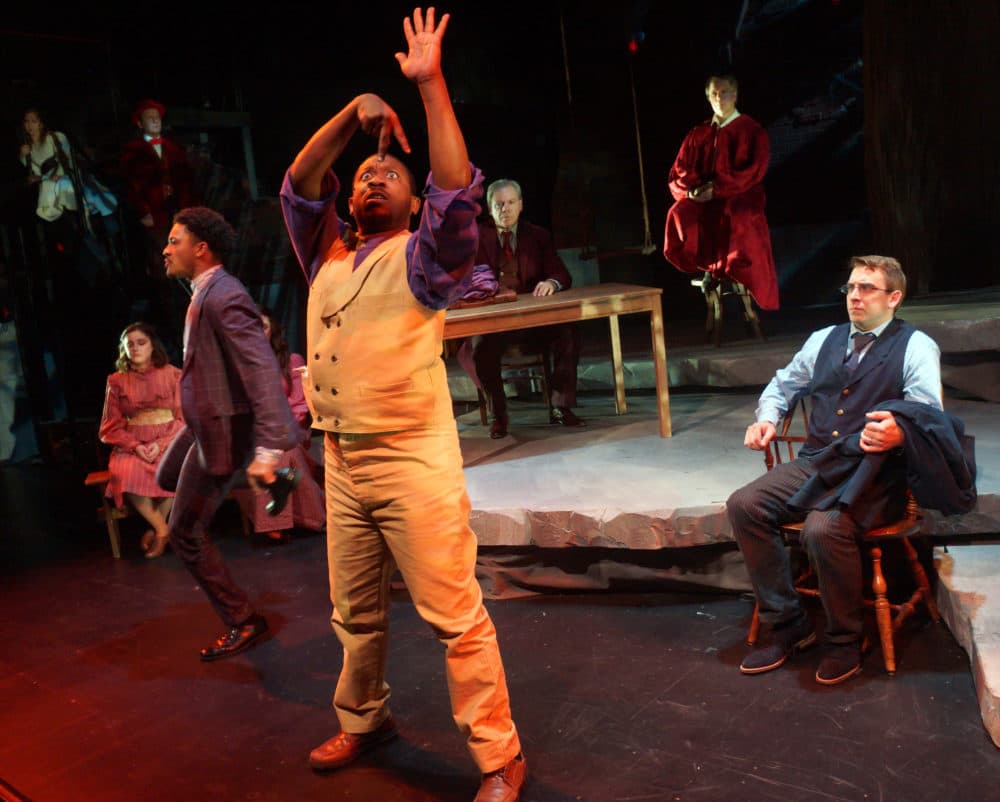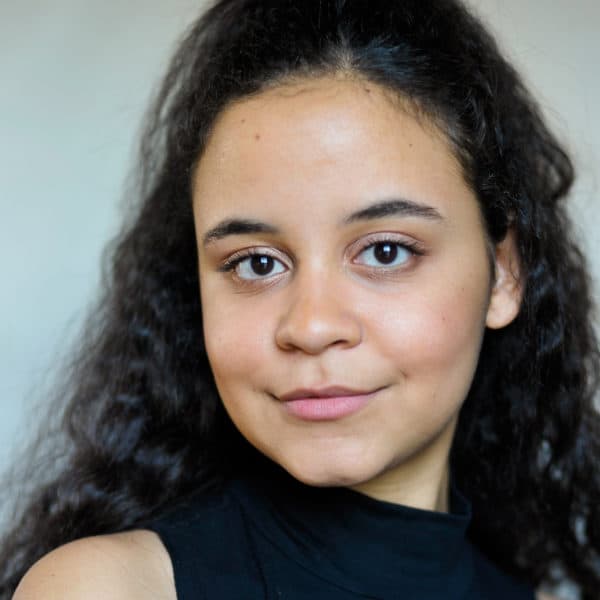Advertisement
An Actor Calls For A More Accessible And Inclusive Future In Theater

“Working over video — it’s not new for Deaf people. We’ve been doing it for years,” says actor Elbert Joseph (EJ). Although, EJ admits that the Zoom fatigue is real because of how much visual energy it takes. As for producing theater virtually? That’s a new world.
Along with many theaters across the nation, the local landscape has shifted toward virtual performance and programming to stay connected to audiences during the pandemic. The theater industry has faced major challenges in reimagining what live productions mean in a time when gathering in large groups is unsafe. Before this massive shift, as theaters were gearing up for their next seasons, I spoke with EJ, a Deaf theatre artist, about accessibility, inclusivity and representation of Deaf people on stage. We recently connected again, this time over Zoom, to discuss if accessibility and inclusivity are moving forward with the wave of virtual and socially-distanced programming.
A quick note on the use of the word ‘deaf’ with a capital ‘D’ — The word ‘deaf’ with a lowercase ‘d’ refers to the audiological lack of the sense of hearing. Lowercase ‘d’ can also signify that that particular individual is not involved in the Deaf community. ‘Deaf’ with a capitalized ‘D’ refers to Deaf people who share the same culture and language, American Sign Language.

EJ has performed many times at Wheelock Family Theatre, a place he frequented as a child with the Horace Mann School for the Deaf and Hard of Hearing, which provides open captions at every in-person performance. “[Wheelock] was very ahead of the curve. Horrace Mann kids like me would have the opportunity to go see shows with sign language interpreters there. That was phenomenal. That was very new,” says EJ. At Wheelock, EJ played the lead role in “Trumpet of the Swan” in 2015. Later that same year, he also appeared as Tuc in all three productions of “The Ware Trilogy” — “Mother Hicks,” “The Taste of Sunrise” and “The Edge of Peace”, a professional collaboration between Emerson College, Wheelock, and Central Square Theater. EJ has also performed at the American Repertory Theater. And at the end of 2019, EJ performed in Moonbox Productions’ “Parade” at the Calderwood Pavilion.
Despite his success across Boston stages, EJ still hits roadblocks when it comes to considerable accessibility when he attends shows and the scarcity of representation of Deaf people on local stages. For instance, when a company provides an ASL interpreter, usually for a limited number of performances, sometimes the ASL interpreter is too far off to the side or not on the same level of the stage, forcing the audience to wrench their necks to watch the show like a tennis match, and causing them to miss the action onstage. The whole show becomes disjointed and disengaging.
Accessibility and Availability
Across the midsize and larger theater companies in Boston, assistive listening devices, open-captioned performances and ASL-interpreted performances are provided at different capacities due to many factors, including funding and physical means. For instance, when we could gather in person, at typically one designated performance per production, ArtsEmerson offered special seating for optimal viewing of an ASL interpreter, indicated as “ASL Seating” on the seating chart when patrons purchased tickets. They also offered open-captioned performances. The New Repertory Theatre also provided one open-captioned matinee performance per show in the season. The Huntington Theatre Company offered ASL interpretation at designated performances. The American Repertory Theater clearly listed the dates and times of their ASL-interpreted, open-captioned and audio-described (for blind audiences) performances on their website. These accommodations are pretty standard nationally, but range in their level of availability.
"I'm a Deaf person, a Black person, I’m gay. I can’t ever just choose one of those identities. They’re all a part of me all the time and as an artist."
Elbert 'EJ' Joseph
On an international level, there have been huge technological advancements in accessibility that exceed what is currently available in Boston. London’s National Theatre, for example, developed individual smart caption glasses — eyewear that has captions displayed on the lenses, making it easier to experience any performance from any seat. As of 2019, People’s Light in Malvern, Pennsylvania is the first theater in the United States to provide the glasses. The glasses are made by Epson and cost around $1,200 a pair, so this technology might not be a financially feasible option for all theaters.
For EJ, access is important, but full inclusion would mean seeing himself and people like him represented on stage. “I’m a Deaf person, a Black person, I’m gay. I can’t ever just choose one of those identities,” he says. “They’re all a part of me all the time and as an artist. I bring those identities with me everywhere I go and to every project I take on. I’m interested in finding people like me who identify in the same way, and you don’t see that on stage.” EJ is currently involved in a workshop for a production of “The Tempest” with new micro-theater company Queen Mab. The show is a collaboration between both Deaf and hearing folks. “At Queen Mab, they are beyond willing to listen...it has made me feel as an artist that I am welcome in that space with all of my intersectional identities,” says EJ.
A Virtual Future
Virtual theater has presented some groundbreaking opportunities for access. Deaf Broadway, a collective that performs Broadway musicals in ASL with Deaf actors over Zoom, emerged during quarantine, seizing the opportunity to virtually provide visual language access for the Deaf community. Deaf Broadway is musical theater entertainment, according to their mission, for the Deaf, by the Deaf. EJ assistant directed Deaf Broadway’s Halloween production of “Rocky Horror Picture Show” and he recently performed in their presentation of “Les Misérables,” which streamed Thanksgiving weekend.
The use of Zoom and other livestreaming platforms has made theater more accessible in a number of ways. Virtual productions can be accessed from practically anywhere with Wi-Fi, which breaks down physical barriers that may have kept audience members from attending the theater. And overall, productions and additional programming are a lot more affordable, which addresses a financial accessibility discrepancy. And now, since it is more feasible technically, theaters are providing accessibility to more than just a select few presentations. Each performance of New Repertory Theatre’s “Showstopper Virtual Play Series” was live captioned during its late fall run. Company One Theatre provided live ASL interpretation for each episode of its “Better Future Series.” The American Repertory Theater includes closed captioning for pre-recorded programming and provides live captioning for one-off virtual events.
For some theaters, accessibility still proves to be lacking. When Central Square Theater presented their summer and fall productions at the new outdoor venue in Cambridge, Starlight Square, EJ noticed that there were no accommodations for Deaf audiences during any of the performances. “Accessibility should be ready. It should be part and parcel of every production. It should be a given,” says EJ.
EJ’s main hope is that, after presenting virtually, theaters will realize how simple certain accessibility measures are to implement. “Folks like me with disabilities have been asking for and explaining how for over 30 years," he says. "It’s positive in that now people realize how they can make things accessible — what the techniques and tools are. But, what I wonder is, once we go back to being in person, are people going to be willing to continue doing it? Because there is no more excuse."
"Accessibility should be ready. It should be part and parcel of every production. It should be a given."
Elbert 'EJ' Joseph
In a statement commenting on the absence of in-person ASL interpretation at Starlight Square, the Central Square Theater's director of marketing, Nicholas Peterson, wrote: "Central Square Theater centered accessibility with free ticketing, physical accessibility with ADA compliance, and a COVID-safe performance venue. With rapid turnaround for programming Starlight, we were unable to provide ASL interpretation. However, we did provide closed captioning for video included in CST's ‘Act Up & Vote’ Festival. CST and our partners plan to provide more of these services when Starlight reopens this spring."
Company One’s managing director, Karthik Subramanian, plans to continue growing their accessibility when the theater returns to in-person programming in the future. Operationally, providing accessibility for Deaf audiences for virtual programming has been more cost-effective than it was for in-person shows. Aside from their production of “Love Person” in 2012, the theater had not provided ASL interpretation for their shows. But Subramanian hopes to move forward with intention and impact in mind.
“Even if it is slow going, I want to make sure that every year we are moving forward and not taking steps back...Through the lens of taking slow steps then staying — you can’t make an exponential jump [in accessibility] then not do it again," Subramanian says. "It’s about balancing against the fact that we do unfortunately have a limited set of resources so it’s about growing responsibly.”
And as we return to in-person theater, EJ wants to advocate for more space for Deaf and disabled artists to come up in the field. He is hoping that Deaf artists will be better represented on theaters’ staffs and boards. “I want to make sure that accommodations that [theaters] were able to provide during COVID are still there afterward and not an afterthought. [Accessibility] needs to stay top of mind for everyone after COVID,” says EJ.
Inching Forward
This past summer, in the wake of a national reckoning of racial injustice, many theaters were called upon by their staff and artists to make systemic, structural changes to their organizations, addressing the white supremacist and inequitable systems in place. A collective of Black, Indigenous, and People of Color theater makers released a list of demands titled, “We See You, White American Theater,” demanding theaters to address the pervasive anti-Blackness and racism in the American theater. The Huntington Theatre Company and the American Repertory Theater are among the many facing the ways in which systemic racism and power structures are embedded in their institutions.
"Audiences need to feel welcome and safe for work to be accessible."
Rebecca Curtiss
As theaters work to nail down what exactly an anti-racist environment looks like, the A.R.T. hired consulting group Yancey Consulting to help the theater build anti-racist values into its operations. As the A.R.T. begins its work, public relations director Rebecca Curtiss hopes accessibility will play an important role in building anti-oppressive structures into the organization’s practices. “Audiences need to feel welcome and safe for work to be accessible. It is not just about how many steps to the bathroom, it is about the culture, value, actions, programs and leadership,” says Curtiss.
Subramanian at Company One recognizes that accessibility and anti-racism are not entirely separate issues, they intersect. A commitment to accessibility goes hand-in-hand with building a more equitable theater. Subramanian says it is crucial to own when we are not doing enough so that it can drive us to do better. “Yes, we are taking steps, but we should be doing so much more. I think if we are all able to hold these multiple truths, then we inch forward as an organization and a sector.”

